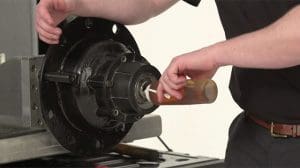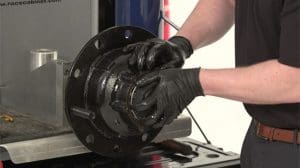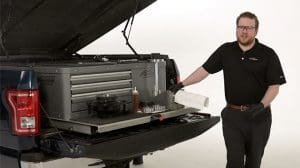La humedad en los aceites lubricantes es un contaminante principal que conduce a la degradación de la base lubricante y los aditivos, y también corroe las superficies de los componentes y acelera el desgaste debido a la reducción de la resistencia de la película fluida. La prueba de crepitación visual es un método de campo simple para detectar y cuantificar aproximadamente la presencia de humedad en estos fluidos.
La prueba de crujido es una prueba sencilla para identificar la presencia de agua libre y emulsionada que está suspendida en aceite. El agua es el elemento más dañino tanto para la máquina como para el aceite. El propósito de este consejo técnico es informar a los clientes sobre la forma correcta de realizar la prueba de crujido visual.
Haremos referencia a los siguientes archivos PDF de STEMCO:
Método
PASO 1
Alcance una temperatura superficial en una placa caliente de 300° F (135° C). Asegúrate de utilizar siempre la misma temperatura.
PASO 2
Agite violentamente la muestra de aceite para lograr una suspensión homogénea de agua en el aceite.
PASO 3
Con un gotero limpio, coloque una gota de aceite en la placa caliente.
Resultados observables
- Figura 1
- Figura 2
- Fig. 3
- figura 4
Si después de unos segundos no se producen crepitaciones ni burbujas de vapor, no hay agua libre o emulsionada.
Si se producen burbujas muy pequeñas (0,5 mm) pero desaparecen rápidamente, hay aproximadamente entre 0,05 y 0,11 TP63T de agua.
Si se producen burbujas de aproximadamente 2 mm que se acumulan en el centro de la mancha de aceite y luego aumentan a aproximadamente 4 mm y desaparecen, hay aproximadamente 0,1 a 0,21 TP63T de agua presente.
Para niveles de humedad superiores a 0,2%, las burbujas pueden originarse a aproximadamente 2-3 mm y luego crecer hasta 4 mm, repitiéndose el proceso una o dos veces. Para niveles de humedad aún más altos, pueden producirse burbujas violentas y crujidos audibles.
Limitaciones
- El método no es cuantitativo.
- Las temperaturas de las placas calientes superiores a 300 °F inducen un centelleo rápido que puede ser indetectable.
- El método no mide la presencia de agua químicamente disuelta.
Consideraciones de seguridad
- Se sugiere gafas protectoras.
- Se sugieren mangas largas.
- La prueba debe realizarse en un área bien ventilada.
Equipamiento requerido
- Placa caliente capaz de alcanzar y mantener una temperatura superficial de 300° F.
- Coctelera de pintura (o equivalente) para agitar el aceite.
- Tubo cuentagotas de aceite o jeringa de laboratorio.
Estándares aplicables
- Ninguno
Interferencias
- Los refrigerantes y otras suspensiones de bajo punto de ebullición pueden interferir.
- Diferentes bases, viscosidades y aditivos mostrarán resultados diferentes.
- Es posible que ciertos productos sintéticos, como los ésteres, no produzcan centelleo.
- El método no es cuantitativo.
- Las temperaturas de las placas calientes superiores a 300 °F inducen un centelleo rápido que puede ser indetectable.
- El método no mide la presencia de agua químicamente disuelta.
Consideraciones de seguridad
- Se sugiere gafas protectoras.
- Se sugieren mangas largas.
- La prueba debe realizarse en un área bien ventilada.
Equipamiento requerido
- Placa caliente capaz de alcanzar y mantener una temperatura superficial de 300° F.
- Coctelera de pintura (o equivalente) para agitar el aceite.
- Tubo cuentagotas de aceite o jeringa de laboratorio.
Estándares aplicables
- Ninguno
Interferencias
- Los refrigerantes y otras suspensiones de bajo punto de ebullición pueden interferir.
- Diferentes bases, viscosidades y aditivos mostrarán resultados diferentes.
- Es posible que ciertos productos sintéticos, como los ésteres, no produzcan centelleo.
Para acceder a nuestra biblioteca completa de consejos técnicos,haga clic aquí.
Para artículos detallados que cubren noticias y tendencias de la industria, productos destacados, estudios de casos, opiniones de clientes y temas de "liderazgo intelectual" de profesionales de STEMCO, visite El blog de la timonera.






